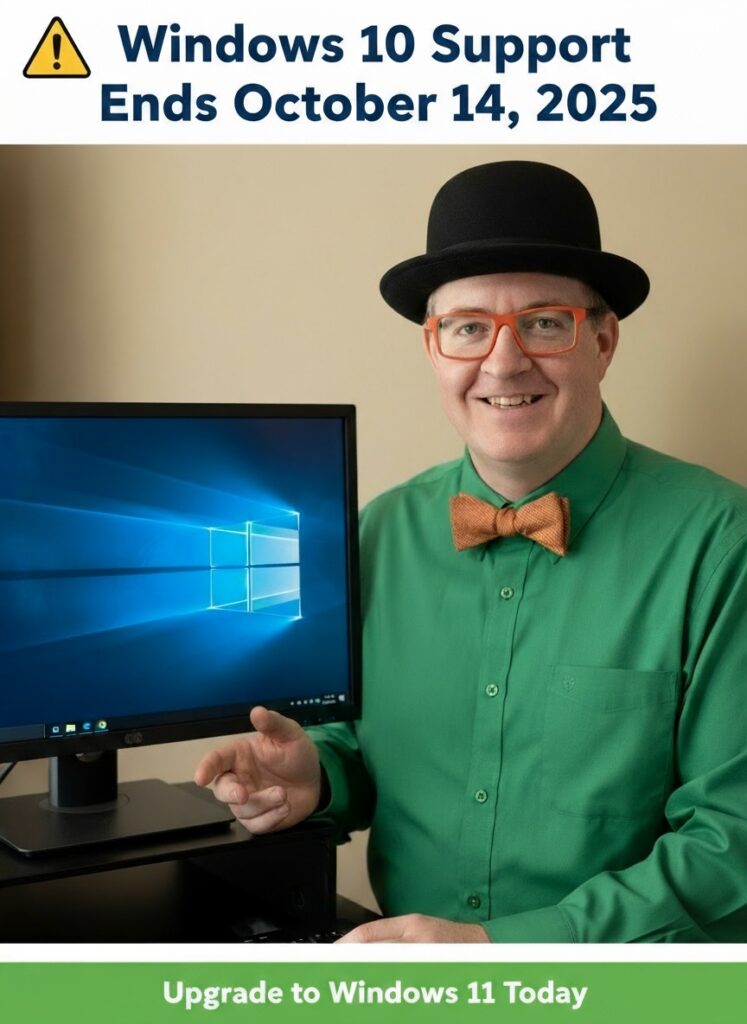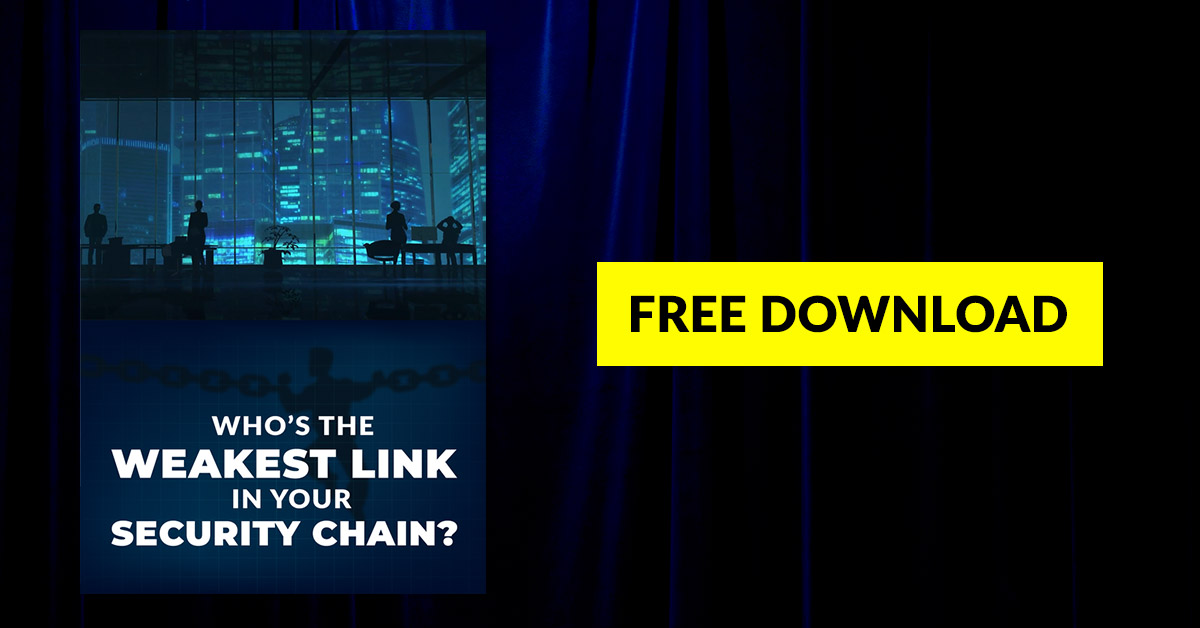
Let me break this down in plain language, so you know exactly what’s happening and what your real options are.
What “End of Support” Actually Means
First, let’s clear up what Microsoft means when they say Windows 10 support is ending in October 2025.
End of support does NOT mean:
- Your computer will stop working
- You’ll suddenly lose internet access
- Your files will disappear
- Microsoft will remotely shut down your machine
End of support DOES mean:
- Microsoft will stop releasing security updates for Windows 10
- New bugs and security vulnerabilities won’t be patched
- Technical support from Microsoft will end
- Your computer becomes increasingly vulnerable to hackers and scammers over time
Think of it like this: Your car still runs after the warranty expires, but you’re not getting free repairs anymore. And if a new safety issue is discovered, the manufacturer won’t fix it for you.
The Real Security Risks (Without Fear-Mongering)
Here’s what actually happens when Windows 10 stops getting security updates:
Hackers will target Windows 10 specifically. Once Microsoft stops patching vulnerabilities, cybercriminals know that every Windows 10 computer out there has the same unpatched weaknesses. They’ll write malware designed specifically to exploit these gaps.
Your antivirus becomes less effective. Even the best antivirus software relies on Windows security updates to work properly. Without them, you’re fighting with one hand tied behind your back.
Ransomware becomes a real threat. Ransomware encrypts your files and holds them hostage until you pay. Older, unpatched systems are prime targets.
Your personal information is at risk. Banking details, passwords, photos, medical records—all of it becomes easier to steal from an unsupported system.
Now, I’m not saying your computer will be hacked the day after support ends. But the longer you stay on Windows 10 without updates, the riskier it gets. It’s like leaving your front door unlocked—you might be fine for a while, but eventually, someone’s going to try the handle.
What Scammers Will Try to Sell You
Here’s where I need to be really honest with you: Scammers are already preparing for October 2025. They’re counting on confusion and fear.
Watch out for these scams:
- “Your Windows 10 is ending—click here to upgrade NOW!” You’ll see pop-ups, emails, and ads claiming you need to upgrade immediately. Many of these are fake. Stick with Microsoft’s official website or a trusted local tech person (like me) to upgrade safely.
- “You need to buy a new computer.” Some computer stores will tell you that your perfectly good Windows 10 machine is now worthless. Not true. Many Windows 10 computers can upgrade to Windows 11 just fine.
- “Call this number for free Windows 11 help.” Scammers will pose as Microsoft support, offering to “help” you upgrade. They’ll get remote access to your computer and steal your information. Real Microsoft support won’t call you unsolicited.
- “Pay us to keep your Windows 10 secure.” Some will claim they can extend Windows 10 support or keep it safe after October 2025. They can’t.
The pattern is always the same: Create urgency, create confusion, then offer a “solution” that costs you money or gives them access to your computer.
Your Three Options (Explained Simply)
So what should you actually do? You have three realistic paths forward:
Option 1: Upgrade to Windows 11
This is what I recommend for most people. Windows 11 is the modern, secure version of Windows. It works similarly to Windows 10, so you won’t feel completely lost.
What you need to know:
- Your computer needs to meet Windows 11 requirements (most computers from 2017 onward do, but not all)
- The upgrade is usually free if you already own Windows 10
- You keep all your files, programs, and settings
- It takes a few hours to upgrade, and you might want professional help to make sure it goes smoothly
The catch: Some older computers can’t run Windows 11 due to hardware limitations. That’s where Option 2 comes in.
Option 2: Buy a New Computer
If your computer is older or doesn’t meet Windows 11 requirements, a new one might be your best bet. Modern computers are faster, more secure, and often cheaper than you’d think.
What you need to know:
- A good, reliable computer for home use starts around $500–800
- You’ll need help transferring your files from your old computer to the new one
- Setting up a new computer properly takes time, but it’s worth it
The catch: This is the most expensive option, and it’s not always necessary.
Note: If your Windows 10 computer is still working great for you, but won’t support Windows 11, we might be able to help you extend support until October 2026. This would. give you an extra year of use or to shop for a good deal. Contact us for more info.
Option 3: Keep Windows 10 (Not Recommended, But Possible)
You *can* keep using Windows 10 after support ends. Your computer won’t stop working. But here’s what you’re accepting:
- No more security updates from Microsoft
- Increasing vulnerability to hackers and malware
- Your antivirus software becomes less effective
- Eventually, programs and websites may stop supporting Windows 10
If you go this route, you’d need to be extremely careful: never click suspicious links, never download files from untrusted sources, use strong passwords, and invest in premium antivirus protection.
Honestly? I don’t recommend this for most people, especially if you use your computer for banking, email, or anything sensitive.
What Upgrading to Windows 11 Means
If you decide to upgrade to Windows 11, here’s what you’re actually getting:
Better security: Windows 11 has built-in protections that Windows 10 doesn’t have. It’s harder for hackers to break in.
Ongoing updates: Microsoft will continue to patch security vulnerabilities for Windows 11 for many years to come.
A familiar experience: If you know how to use Windows 10, Windows 11 will feel pretty similar. The basics are the same.
Possible learning curve: Some things have moved around. The Start menu looks a bit different. But it’s not a huge adjustment, and I can help you get comfortable with it.
Performance boost: Many people notice their computer feels a bit faster and more responsive on Windows 11.
Compatibility: Most of your programs and files will work fine. Some older software might need updating, but that’s rare.
What Should You Do Right Now?
Don’t panic. Don’t rush into anything. But do take action:
- Find out if your computer can run Windows 11. This is the first step. Not all Windows 10 computers can upgrade.
- Back up your important files. Whether you upgrade or buy new, having a backup is essential.
- Get professional help. Upgrading or switching computers is easier and safer with expert guidance.
- Ignore the fear-mongering and scams. If something sounds too urgent or too good to be true, it probably is.
Ready to Get Your Computer Ready for the Future?
I offer a free Windows 11 readiness check to see if your computer can upgrade, what your options are, and what the next steps look like. No pressure, no sales pitch—just honest advice.
Call me today: (403) 915-8574
I serve Lethbridge and all of Alberta and Saskatchewan with remote support, so wherever you are, I can help. We can chat about your specific situation and make a plan that works for you.
Final Thoughts
Windows 10 ending isn’t a crisis. It’s a reminder that technology changes, and staying secure means staying current. Whether you upgrade to Windows 11, get a new computer, or take another path, the important thing is making an informed decision—not a panicked one.
If you have questions or want to talk through your options, I’m here to help. That’s what Y-Not Tech Services is all about: giving you honest, jargon-free guidance so you can make the best choice for your situation.
You don’t have to figure this out alone. Call me at (403) 915-8574, and let’s get your computer ready for what’s next.


